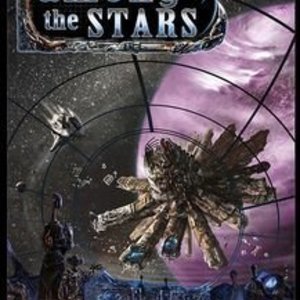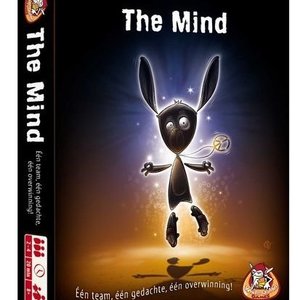
Jaipur
Tabletop Game
Jaipur, capital of Rajasthan. You are one of the two most powerful traders in the city. But...
Boardgames Cardgames FamilyGames
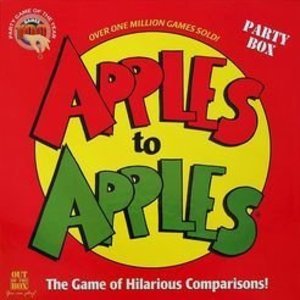
Apples to Apples
Tabletop Game
This infamous wild card and party game provides instant fun for 4 to 10 players! It's as easy as...

Ryker (Owatonna U Hockey #1)
RJ Scott and V.L. Locey
Book
This New Adult book is the first in the Owatonna U Series, a spin off from the best selling...
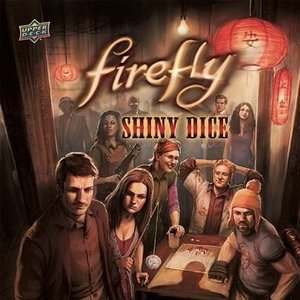
Firefly: Shiny Dice
Tabletop Game
Firefly: Shiny Dice lasts three rounds, and whoever has the most points after three rounds wins. In...
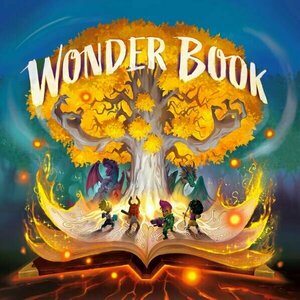
Wonder Book
Tabletop Game
Oniria — the world of an ancient dragon civilization. Tales describe the land as an idyllic...
Purple Phoenix Games (2266 KP) rated Among the Stars in Tabletop Games
Dec 3, 2021
Disclaimer: Among the Stars can be played in two different modes – Aggressive and Non-Aggressive. This review covers the core game Non-Aggressive mode of play. -L
Among the Stars is a game of card drafting and tile placement in which players take on the roles of different alien races attempting to build the most efficient space station over the span of 4 years (rounds). After the 4th and final round, players calculate their final scores, and the player with the highest score is the winner! To setup for a game, assemble the Location deck as described in the rules. Each player takes a Main Reactor card and score marker in their chosen color. Score markers are placed at zero on the score board, and players put their Main Reactor card face-up in front of them, along with 2 Energy Cubes. Players choose, or are randomly given, a Race Tile with a special Racial Ability to be used throughout the game. Randomly draw the requisite number of Objective cards and put them face-up near the score board. The game is now ready to begin!
Over the course of 4 rounds, players will be drafting cards and playing them into their Space Station. At the start of each round, every player collects 10 Credits (game currency), and draws a hand of 6 Location cards. Every turn, players will select one card from their hand, place it face-down in front of them, and will pass the remaining cards in their hand to the next player (in either clockwise or counter-clockwise direction, depending on the round). Players will then simultaneously reveal their chosen card and perform one of three actions: Build a Location, Build Power Reactor, or Discard and gain 3 Credits. To Build a Location, you pay its listed cost in Credits and/or Energy and add it to your Space Station. Locations must be placed orthogonally adjacent to an existing Location. When you build a Location, you immediately gain the listed number of VP (tracked on the score board), and may use its ability. Some abilities are immediate and earn you extra VP now, while some are delayed and will be counted at the end of the game. To Build a Power Reactor, you will first discard your selected card for the turn. Pay the 1 Credit cost of a Power Reactor and place it into your Space Station, along with 2 Energy Cubes. Every round, you get 10 Credits, but Energy Cubes do not replenish unless you build more Power Reactors, so keep an eye on your resources! The last possible action is to Discard and gain 3 Credits, and is pretty self-explanatory.
Players continue taking turns (drafting cards, passing cards, and playing cards) until they are left with no cards in hand. The round is now over. Move the round marker to the next space, and begin a new round by drawing another hand of 6 cards. After the 4th round of play, the game ends and final VP are scored. Victory Points have been earned throughout the game, but now any delayed abilities are triggered and scored, Objective points are added, and players gain points for Power Reactors and remaining Credits. The player with the highest score is the winner!
See what I mean about being 7 Wonders in space? The overall gameplay is pretty much the same thing – draft a card, pass cards, play the card – even though thematically they’re on opposite ends of time. That familiarity and simplicity of the gameplay definitely added to my enjoyment of the game. And when I say ‘simplicity’ of gameplay, I do not mean that it is an easy game necessarily. It still requires a decent amount of strategy! Not only do you have to decide what card to draft for maximum benefit, but you also need to figure out exactly where to put it in your Space Station too. Some Locations may give you extra VP for being adjacent to certain other Locations, or they may even earn more VP for distance between two Locations. You’ve got to be thinking in advance, but also able to adapt on the fly. Do you draft a card that you don’t necessarily want because you can see your opponent needs it? Or do you keep your head down and try to fly under the radar? The strategy and mechanics work very well together in creating an engaging and entertaining game.
Components. This game basically just consists of cards, a score board, and some tokens. So even though it’s nothing too fancy or anything, they’re still pretty decent quality! The artwork is thematic and fun to look at, and the layout of the cards is easy to understand. The cards are square, so that makes for some interesting shuffling, but the square shape really lends itself well to the tile-laying aspect of the gameplay. So all in all, good production quality. Just be warned – as the game progresses, it turns into quite a table hog, since you are constantly adding cards to your Space Station. Not a knock on the game, just a heads up so you give yourself plenty of room!
Will Among the Stars replace 7 Wonders for me? Ultimately, no. Don’t get me wrong, it’s still a great game, but 7 Wonders just offers a little more strategy that bumps it to a higher level than Among the Stars. To introduce players to these mechanics and gameplay style, I would use Among the Stars because it is a little ‘lighter’ than 7 Wonders, if you ask me. If you are a fan of 7 Wonders and are interested in a more futuristic theme, I would definitely recommend checking out Among the Stars. It’s a neat game that has been hiding on my game shelf without the playtime it deserves. Purple Phoenix Games gives this one a stellar 15 / 18.

Europe travel guide and offline map London subway Paris metro maps Rome airport transport, Barcelona city guide, Amsterdam traffic & sightseeing information trip advisor, lonely travel planet
Travel and Magazines & Newspapers
App
Europe Travel Newsstand app offers travel guides and up-to-date seasonal information for your...
Purple Phoenix Games (2266 KP) rated The Mind in Tabletop Games
Nov 26, 2019
The Mind is a card game in which the players are trying to play their cards in ascending numerical order. That’s it. No, seriously. The ONLY catch is that players are not allowed to communicate in any way which cards they hold in their hands. No talking, no noises, and no gesturing of any kind. That’s how they getcha. Here’s how it works – at Level 1 (start of the game), each player is dealt one card. When the level officially begins, you must decide when is the right time to play your card. If the cards are played in order, then you move to Level 2 and receive 2 cards to start the round. Level 3 gives you 3 cards, and so on. Players win the game if they successfully complete a certain number of Levels.
I’m not here to comment on the “Is The Mind a game or not” debate, I’m just here to let you know our thoughts! The Mind is definitely an interesting experience, to say the least. A game that often begins timidly usually turns into a high-energy (and sometimes high-stress) atmosphere of fun. Although it might feel like pure luck, or even hidden telepathic connections, The Mind is ultimately a game of timing. The subtitle says it all – “Let’s become one…” Can you and your friends synchronize your timing well enough to make progress? Or will there be someone amongst the group who inadvertently throws off the groove?
Is The Mind my favorite game? No. But it’s one that I enjoy playing. I think it’s a unique game that keeps everyone on their toes, despite its appearance of simplicity. One thing I really enjoy is playing The Mind several times with the same group of people. It’s neat to see how the group learns the nuances of how everyone plays, and keeping that flow going between games and sessions. I also enjoy playing The Mind with a totally new group of people too for the same reason – everyone has a different play style and you’ve got to be able to learn and adapt to any given player.
The hardest rule is perhaps the one that makes the game most interesting, and that is the no communication rule. Admittedly, I do sometimes accidentally throw up a gesture or two to signal to other players, but even those are sometimes hilariously misunderstood and lead to some close calls or devastating defeats.
Overall, I think The Mind is a pretty neat game. It’s not one that I play too often, but it’s one that is simple enough to teach and play that I like playing it with newer gamers. The Mind plays fairly quickly too, so that makes it a good filler between some heavier games. Purple Phoenix Games (with input from guest score Tony) gives The Mind a thoughtful 14 / 24.
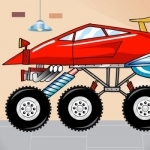
Create a Car
Education and Games
App
Create a car and drive it! Create a Car is a top-selling creativity app for children ages 3 to 6. ...
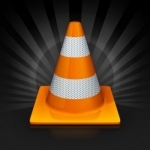
VLC Remote Free
Entertainment and Music
App
VLC Remote® lets you remotely control your VLC Media Player on your Mac or PC. For iPhone iPad!...
